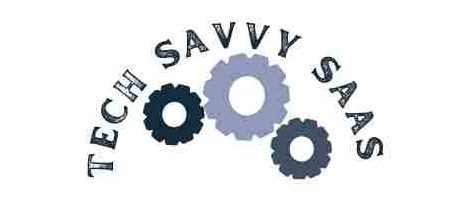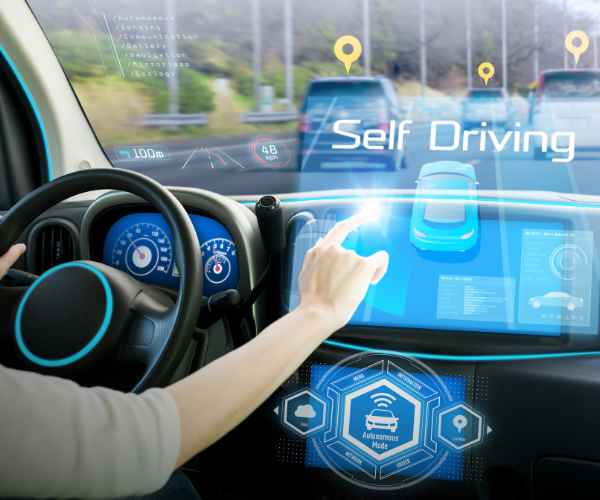Innovation has the profound ability to reshape our world and everyday lives, altering everything from the way we communicate to the energy sources powering our cities. For instance, the introduction of the smartphone has changed personal and professional communication, allowing over 5 billion people worldwide to connect in ways previously unimaginable. Similarly, renewable energy technologies like solar and wind power are drastically reducing our dependence on fossil fuels, which accounted for nearly 84% of global energy in 2019, according to the International Energy Agency.

Why focus on the people and stories behind innovations?
- Why focus on the people and stories behind innovations?
- The Birth of Breakthroughs: How Ideas Turn Into Innovations
- What Are the Common Obstacles That Businesses Face in the Tech World?
- How do products transition from prototypes to market leaders?
- How has the smartphone revolutionized communication and technology?
- What Are the Latest Advancements in AI and Their Impact Across Various Sectors?
- How Are Green Technologies Making a Sustainable Impact on Our Planet?
- What Are the Key Takeaways from the Stories of Innovation in Technology?
“Tech Tales” delves deep into the personal journeys and challenges faced by innovators. It focuses on the human element behind the breakthroughs, revealing the stories of determination, failure, and success that characterize the path to innovation. Figures like Elon Musk and Steve Jobs exemplify this, turning simple ideas into technologies that have transformed industries and spurred new ways of thinking and creating. Their stories help us understand that behind every technology, there’s a team or an individual who dared to think differently.
How Do Personal Anecdotes and Insights from Leaders Enhance Understanding of Innovations?
Personal anecdotes and expert insights significantly enhance the narrative by providing a relatable context. For example, interviews with leaders like Rita McGrath, a professor at Columbia Business School known for her work on strategy and innovation, offer an inside look at the theory and practice of disrupting markets. These perspectives are supplemented by data, such as McGrath’s analysis of companies that successfully pivoted their business models during the pandemic, showing a 20% higher growth rate compared to their competitors.
The Birth of Breakthroughs: How Ideas Turn Into Innovations
The Spark of Inspiration:
Innovation often starts with a simple yet powerful idea. Consider the development of integrated graphics by companies like Intel and AMD. This innovation allowed for the creation of smaller, more power-efficient computers, and as a result, laptops capable of running complex graphics applications became widely accessible. For instance, AMD reported a 58% increase in revenue in Q1 2021 due largely to the success of their Ryzen and Radeon series, which are popular among both gamers and professionals.
Examples of Major Companies Transforming Ideas into Innovations:
- Apple: The introduction of the iPhone in 2007 revolutionized the smartphone market, not only by combining an iPod, phone, and internet communicator into one device but by creating an entirely new ecosystem for mobile apps. This ecosystem now hosts over 1.96 million apps, generating over $64 billion in revenue in 2020 alone.
- Google: Known for its innovation in web search and advertising, Google has also made significant advancements in AI and machine learning. Their AI program, DeepMind, has been used to improve energy efficiency in data centers, reducing cooling costs by 40% and overall energy usage by 15%.
What Are the Common Obstacles That Businesses Face in the Tech World?
In the realm of technology, the road to innovation is often fraught with challenges. Legal actions, regulatory hurdles, and disruptive market entrants are just a few of the obstacles that companies must navigate.
Legal and Regulatory Challenges:
- IBM: A notable historical example is the antitrust case faced by IBM in the 1970s, which lasted 13 years and fundamentally changed the company’s approach to competition and innovation. Despite this, IBM remained a leader in tech innovation, investing approximately 6% of its annual revenue in R&D, which has led to significant advancements in fields like quantum computing and artificial intelligence.
- Facebook: More recently, Facebook (now Meta) has faced various legal challenges, including privacy disputes and antitrust investigations across the U.S. and Europe. Despite these issues, the company continues to innovate, with significant investments in virtual reality and augmented reality technologies, showcasing resilience and adaptation.
Insights from Industry Leaders on Navigating Challenges:
- Andy Grove, former CEO of Intel, famously said, “Only the paranoid survive,” emphasizing the need for constant vigilance and readiness to adapt in the face of industry challenges. Grove’s strategies are evident in how Intel has managed to pivot numerous times, from memory chips to microprocessors, maintaining its market leadership against fierce competition.
How do products transition from prototypes to market leaders?
The journey from a prototype to a market-leading product is complex and requires not only innovation but also strategic market timing and readiness.
Case Studies:
- Electric Vehicles (EVs): Tesla, led by Elon Musk, has been at the forefront of the electric vehicle market. Starting with a prototype in 2006, Tesla’s Roadster, and subsequently more accessible models like the Model S and Model 3, have helped popularize electric vehicles. By the end of 2020, Tesla had reported deliveries of nearly 500,000 vehicles globally, indicating strong market adoption.
- Renewable Energy Technologies: Companies like NextEra Energy have transformed from traditional energy providers to leaders in the wind and solar energy sectors. NextEra Energy is now the world’s largest producer of wind and solar energy, with a significant portion of its revenue, approximately 40%, coming from these sources as of 2021.
Analysis of Market Readiness:
- Battery Storage Technologies: The global battery storage market is expected to grow from $2.9 billion in 2020 to $8.5 billion by 2025, at a compound annual growth rate (CAGR) of 24.3%, driven by the increasing demand for renewable energy sources and the decreasing cost of battery production.
- Health Care Innovations: The adoption of telehealth has surged, particularly highlighted during the COVID-19 pandemic, where providers saw a 50 to 175 times increase in telehealth patient volumes compared to pre-pandemic levels, according to McKinsey & Company.
How has the smartphone revolutionized communication and technology?
The evolution of the smartphone is one of the most significant technological tales of the 21st century. It has fundamentally changed how we communicate, access information, and manage our daily lives.
Evolution of Smartphone Technologies:
- Early Innovations: The first smartphones, like IBM’s Simon Personal Communicator launched in 1994, combined a phone with some features of a computer. However, it was Apple’s iPhone in 2007 that truly ignited the smartphone revolution with its touchscreen interface and app ecosystem.
- Key Models and Technologies: Samsung, a major player in the smartphone market, has been pivotal in advancing screen technology with its Galaxy S series, introducing the Super AMOLED display in 2010. These devices have supported rapid data consumption, with the average smartphone user now consuming nearly 8.9 gigabytes of data per month, a significant increase from about 0.4 gigabytes in 2011.
- Impact on Social Media and Communication: Smartphones have transformed social media into a mobile-first technology, with platforms like Instagram and Snapchat being designed predominantly for mobile use. As of 2021, over 91% of social media users access social platforms via mobile devices, facilitating real-time communication and information sharing.
What Are the Latest Advancements in AI and Their Impact Across Various Sectors?
Artificial intelligence (AI) has seen tremendous growth, influencing diverse sectors from health care to emergency services.
Recent Advancements in AI:
- Health Care Applications: AI algorithms can now diagnose conditions from images with an accuracy rate comparable to or sometimes surpassing that of human experts. For example, Google Health’s AI model can detect breast cancer in mammography scans with a 5% higher accuracy than human radiologists.
- Emergency Services: AI-driven systems are being used to optimize dispatching for emergency responses. IBM and several other tech companies have developed AI systems that predict emergency event severity and suggest optimal deployment of resources, potentially reducing response times by up to 30%.
Insights from Thought Leaders and Case Studies:
- Elon Musk and Neuralink: Musk’s company Neuralink is working on developing brain-machine interfaces that might one day help treat neurological disorders and merge human consciousness with AI, demonstrating the futuristic vision of AI’s potential.
- MIT Technology Review: Reports from MIT Technology Review highlight AI’s role in enhancing data security systems, using machine learning algorithms to predict and thwart cyber attacks more effectively than traditional software.
How Are Green Technologies Making a Sustainable Impact on Our Planet?
The shift towards green technology is critical to combating climate change and promoting environmental sustainability.
Innovations in Green Technology:
- Hydrogen-Powered Vehicles: Companies like Toyota and Hyundai are leading the way in hydrogen fuel cell technology with vehicles like the Toyota Mirai and Hyundai Nexo. These cars emit only water vapor and are seen as a pivotal technology in reducing reliance on fossil fuels.
- Impact of Renewable Energy: The installation of renewable energy sources has grown exponentially, with solar and wind energy capacity increasing by over 89% in the last five years globally. This shift is not only reducing carbon emissions but also creating new jobs, with the renewable energy sector employing over 11 million people worldwide as of 2019.
Recognition in Sustainability Practices:
- Harvard Business Review and Grand Award Winners: Publications like Harvard Business Review have recognized companies like NextEra Energy for their innovative approaches to sustainable energy solutions. These companies are often featured as grand award winners for their impactful environmental policies and technologies.
What Are the Key Takeaways from the Stories of Innovation in Technology?
The journey through various tech tales reveals profound insights into how innovation shapes our society and economy. Here are eight critical lessons derived from the innovations, data, and stories discussed:
- The Importance of Visionary Leadership: Leaders like Elon Musk and Steve Jobs have shown how a clear and compelling vision can drive technological breakthroughs that transform industries.
- Adaptability in Business: Companies must adapt to survive. For instance, IBM’s shift from hardware to cloud and AI services shows the necessity of evolving business models in response to technological changes.
- Impact on Job Creation: Technologies like AI and renewable energy are not just innovations; they are significant job creators. The solar industry alone employed about 242,000 Americans in 2019, according to the National Solar Jobs Census.
- Enhancing Everyday Life: From smartphones improving communication to AI enhancing healthcare diagnostics, technology continuously elevates the quality of life and efficiency of services.
- Sustainability as a Driver of Innovation: The push towards green technologies demonstrates that environmental sustainability can also be economically viable and a source of innovation, as seen with the rise of electric vehicles and renewable energy solutions.
- Economic Disruption and Opportunity: New technologies disrupt existing markets but also create new opportunities. The rise of e-commerce platforms like Amazon has transformed retail, driving efficiency and consumer convenience while challenging traditional retail models.
- Educational Transformation: Digital education tools and platforms have revolutionized the way we learn, making education more accessible and tailored to individual learning styles.
- Global Impact: Technological innovations have a global impact, breaking down geographical barriers and fostering global communication and business opportunities, as illustrated by the worldwide connectivity enabled by the internet and mobile devices.
Conclusion
The tech tales we’ve explored, from the introduction of GPU innovations to the development of theories like disruptive innovation, underscore how technology reshapes our understanding and interaction with the world. These innovations are not just milestones but catalysts for broader societal shifts.
As we look to the future, the landscape of technology will only continue to evolve and influence every aspect of our lives. Engaging with tech tales is essential—not just for IT professionals but for anyone interested in the ripple effects of technology on our culture, economy, and personal lives. By staying informed and curious, we can better navigate the challenges and opportunities that lie ahead.
Each story of technological advancement serves as a beacon for future innovators. Understanding the pathways and challenges of past innovations provides valuable lessons and inspiration for those looking to drive the next wave of technological change.
More Post
- Riding the Tech Wave: Trends You Can’t Ignore
- What Is the Revolutionary Role of SaaS in Modern Business Operations?
- Navigating the Tech Wave: The Latest Trends for Success
- The Digital Renaissance: The Evolution of Technology in the 21st Century
- How Are Cutting-Edge Technologies Fundamentally Transforming Business Models?






